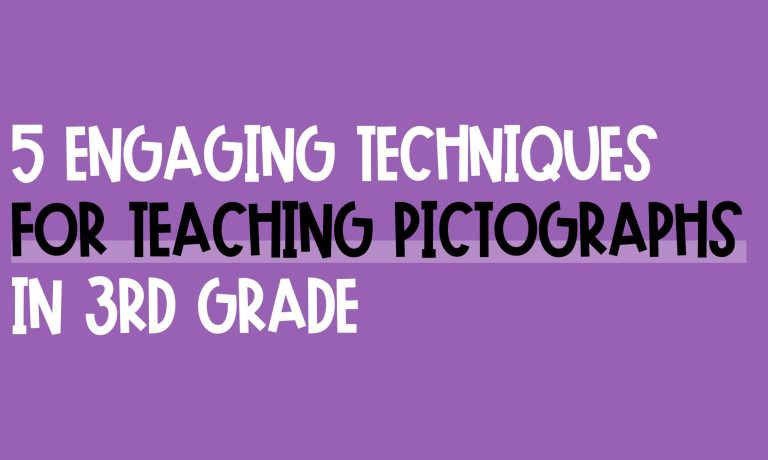Pictographs are an important part of the 3rd-grade curriculum, helping students develop data representation and analysis skills. Engaging techniques for teaching pictographs can be employed to make the learning experience more exciting and meaningful. This blog post will explore five techniques to captivate 3rd-grade students and enhance their understanding of pictographs.
Technique 1: Teaching Pictographs with Real-Life Examples
Start by introducing the concept of pictographs with real-life examples. For instance, discuss the number of pets each student owns in the class and represent the data using pictographs. Allow students to share their favorite hobbies or sports and then collaboratively create a class pictograph showcasing this information. By incorporating familiar objects or scenarios, students can connect their daily experiences to the concept of data representation. Encourage students to collect data themselves, such as their favorite ice cream flavors, and represent it graphically, allowing them to see the relevance of pictographs in practical situations.
Technique 2: Interactive Activities for Teaching Pictographs
Leverage technology to create interactive pictograph activities. Use an interactive whiteboard or tablets to introduce pictographs visually appealingly. Some various online resources and games provide interactive experiences, enabling students to create and interpret pictographs engagingly. You can also use specialized software that allows students to design their own pictographs, selecting colors, symbols, and data to represent. Additionally, hands-on activities using manipulatives such as colorful stickers or stamps can give students a tangible way to construct their own pictographs, reinforcing their understanding of the concept.
Technique 3: Pictograph Story Problems
Integrating pictographs into word problems and mathematical scenarios can make learning more enjoyable. Present students with story problems that require them to analyze and interpret pictograph data. For example, present a scenario where students must interpret a pictograph representing the number of books read by different students over a week. This technique enhances their data analysis skills and promotes critical thinking and problem-solving abilities. Encourage students to think about what the data in the pictograph means and how it can be used to answer questions or solve problems.
Technique 4: Pictograph Gallery Walk
To create a visually stimulating environment, have students create their own pictographs based on different themes or topics. Once completed, organize a gallery walk activity where students can analyze and discuss each other’s pictographs. This collaborative approach encourages peer-to-peer learning and provides students with opportunities to practice their interpretation skills while appreciating the creativity of their classmates. Encourage students to ask questions about each other’s pictographs, fostering a deeper understanding and curiosity about data representation.
Technique 5: Pictograph Reflection and Extension
To solidify learning, offer opportunities for students to reflect on their experiences with pictographs. Provide a set of questions that prompt them to think critically about the process of creating and interpreting pictographs. For example, ask them to describe their challenges during the activity or how they could improve their pictograph designs. Additionally, extend their understanding by providing open-ended questions or challenges that require them to apply their knowledge creatively. For instance, have students design a pictograph representing their dream vacation destinations. This technique fosters a deeper understanding and encourages students to think outside the box, enriching the learning experience.
Teaching pictographs in 3rd grade can be an exciting journey with the implementation of engaging techniques. By using real-life examples, interactive activities, story problems, gallery walks, and reflection exercises, teachers can create an immersive learning experience for their students. These techniques enhance students’ understanding of pictographs and foster critical thinking, problem-solving skills, and creativity. As educators, let’s strive to make mathematics education engaging and enjoyable for every student. Implement these techniques and witness the enthusiasm and growth of your 3rd-grade class!
Need some resources to use for teaching pictographs with your students? Click here to see what I’ve got!
